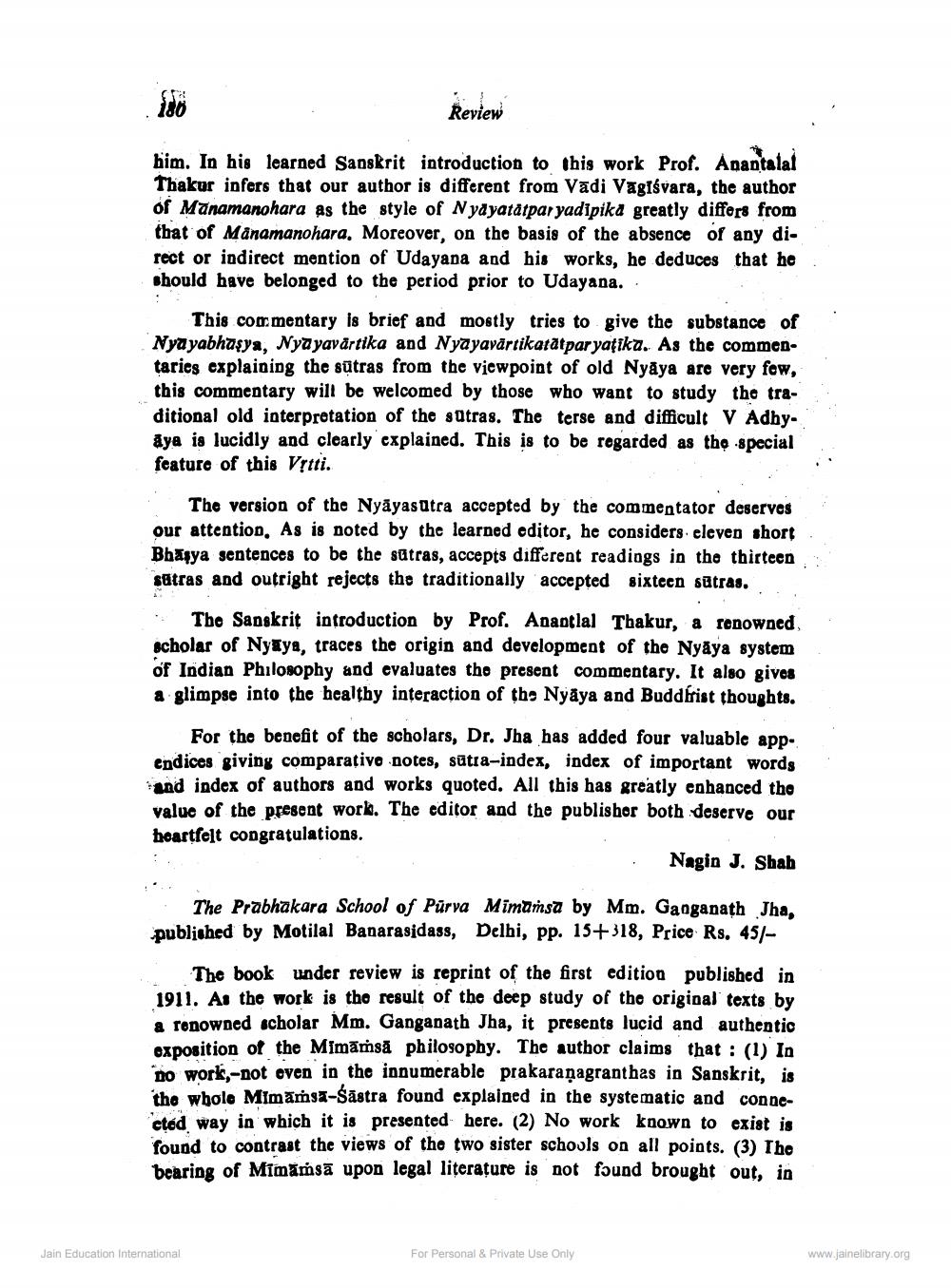________________
180
Review
him. In his learned Sanskrit introduction to this work Prof. Anantalal Thakur infers that our author is different from Vadi Vagtsvara, the author of Manamanohara as the style of Nyayatatparyadipika greatly differs from that of Manamanohara, Moreover, on the basis of the absence of any direct or indirect mention of Udayana and his works, he deduces that he should have belonged to the period prior to Udayana..
This commentary is brief and mostly tries to give the substance of Nyayabhaya, Nyayavartika and Nyayavartikatatparyatika. As the commentaries explaining the sutras from the viewpoint of old Nyaya are very few, this commentary will be welcomed by those who want to study the traditional old interpretation of the sutras. The terse and difficult V Adhyaya is lucidly and clearly explained. This is to be regarded as the special feature of this Vṛtti.
The version of the Nyayasutra accepted by the commentator deserves our attention, As is noted by the learned editor, he considers eleven short Bhasya sentences to be the sutras, accepts different readings in the thirteen satras and outright rejects the traditionally accepted sixteen sutras.
The Sanskrit introduction by Prof. Anantlal Thakur, a renowned. scholar of Nyys, traces the origin and development of the Nyaya system of Indian Philosophy and evaluates the present commentary. It also gives a glimpse into the healthy interaction of the Nyaya and Buddfrist thoughts.
For the benefit of the scholars, Dr. Jha has added four valuable appendices giving comparative notes, sutra-index, index of important words and index of authors and works quoted. All this has greatly enhanced the value of the present work. The editor and the publisher both deserve our heartfelt congratulations.
Nagin J. Shab
The Prabhakara School of Parva Mimamsa by Mm. Ganganath Jha, published by Motilal Banarasidass, Delhi, pp. 15+318, Price Rs. 45/
The book under review is reprint of the first edition published in 1911. As the work is the result of the deep study of the original texts by a renowned scholar Mm. Ganganath Jha, it presents lucid and authentic exposition of the Mimämsä philosophy. The author claims that: (1) In no work,-not even in the innumerable prakaraṇagranthas in Sanskrit, is the whole Mimärhs-Sastra found explained in the systematic and connected way in which it is presented here. (2) No work known to exist is found to contrast the views of the two sister schools on all points. (3) The bearing of Mimämsä upon legal literature is not found brought out, in
Jain Education International
For Personal & Private Use Only
www.jainelibrary.org




